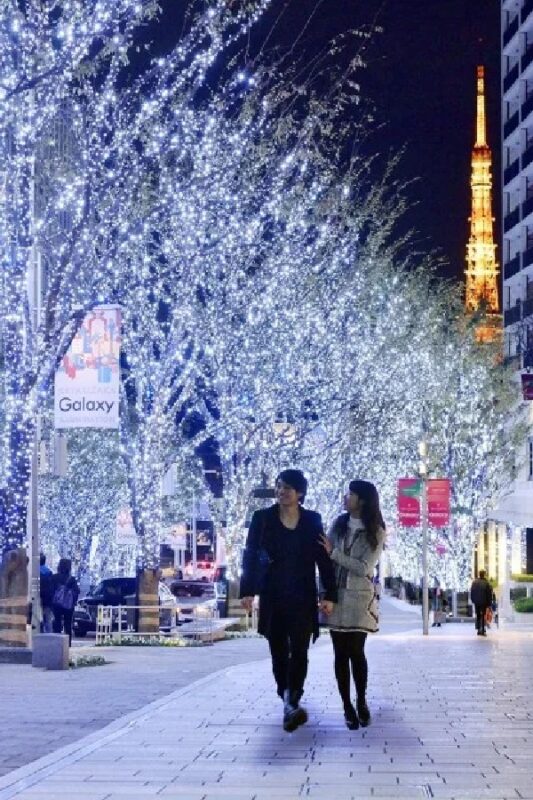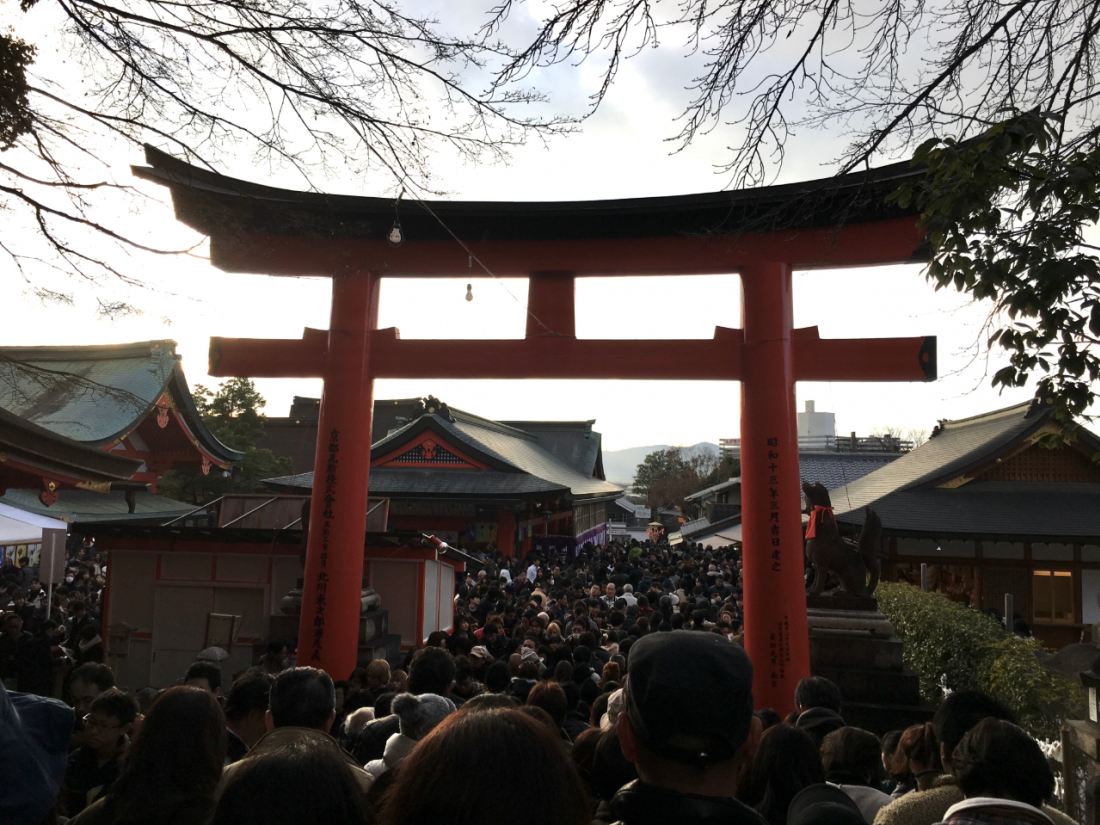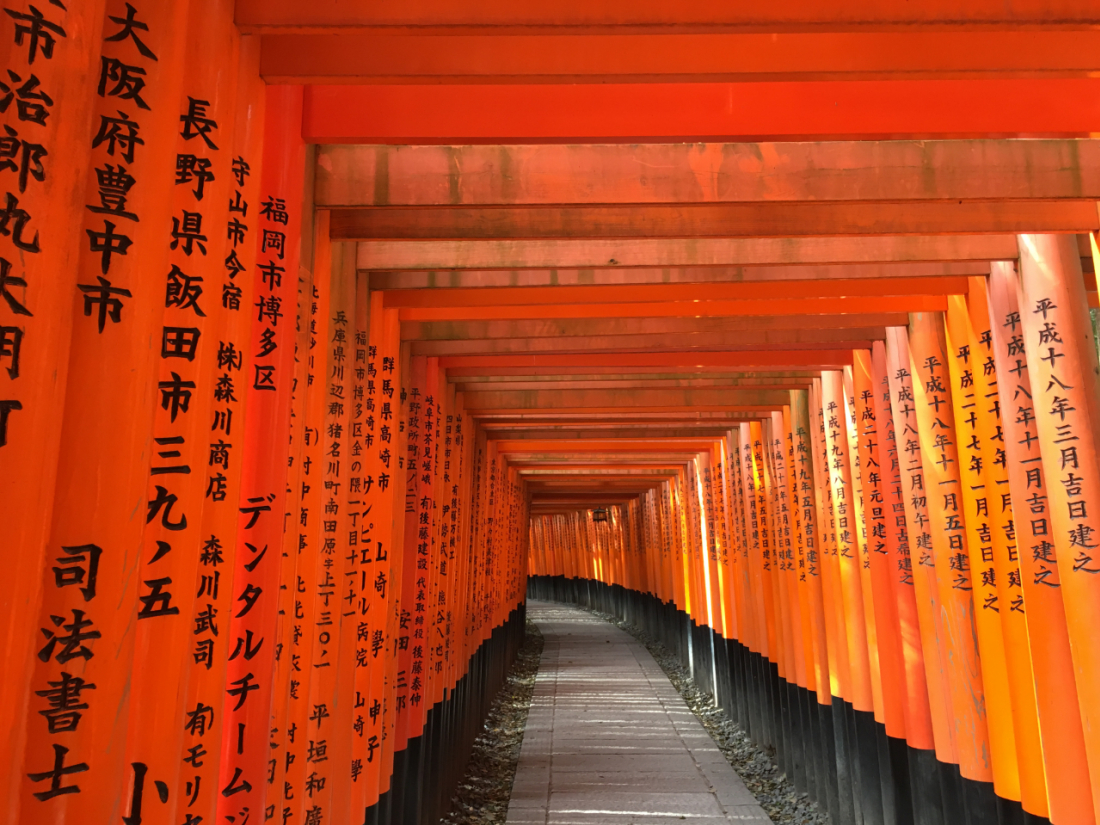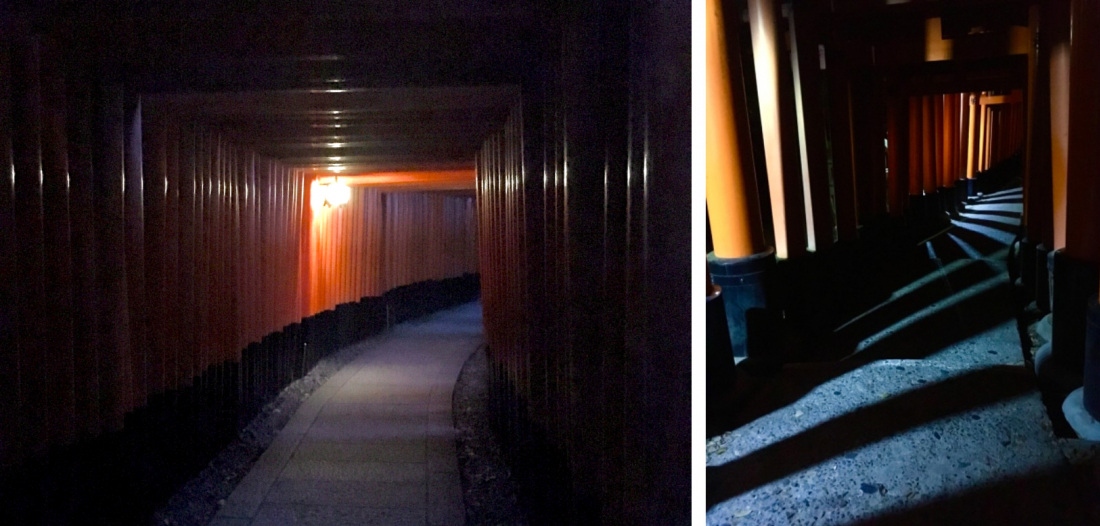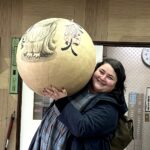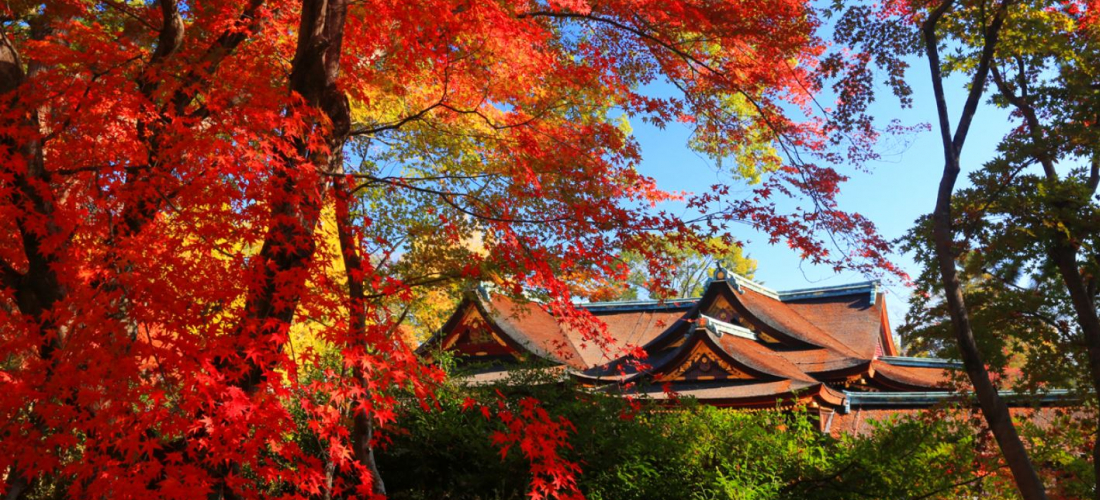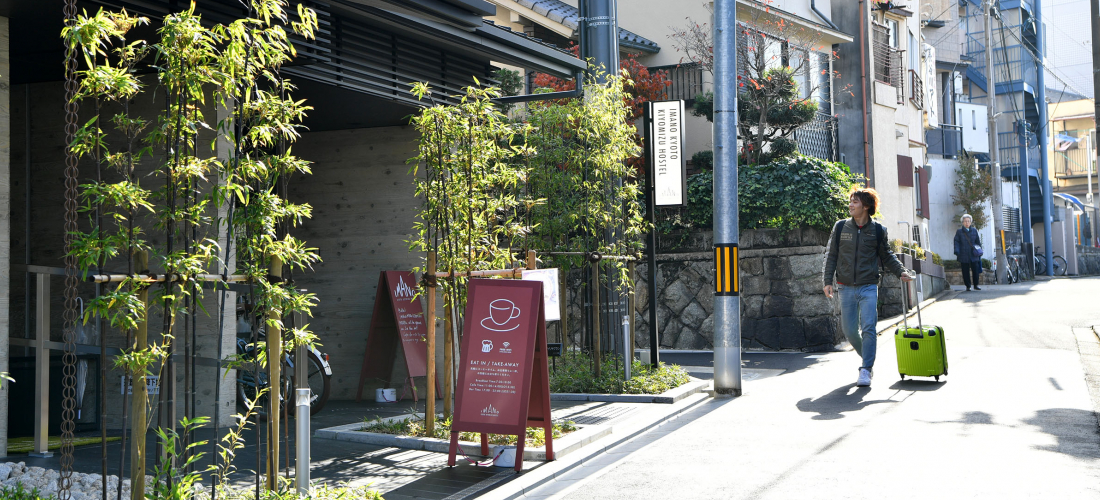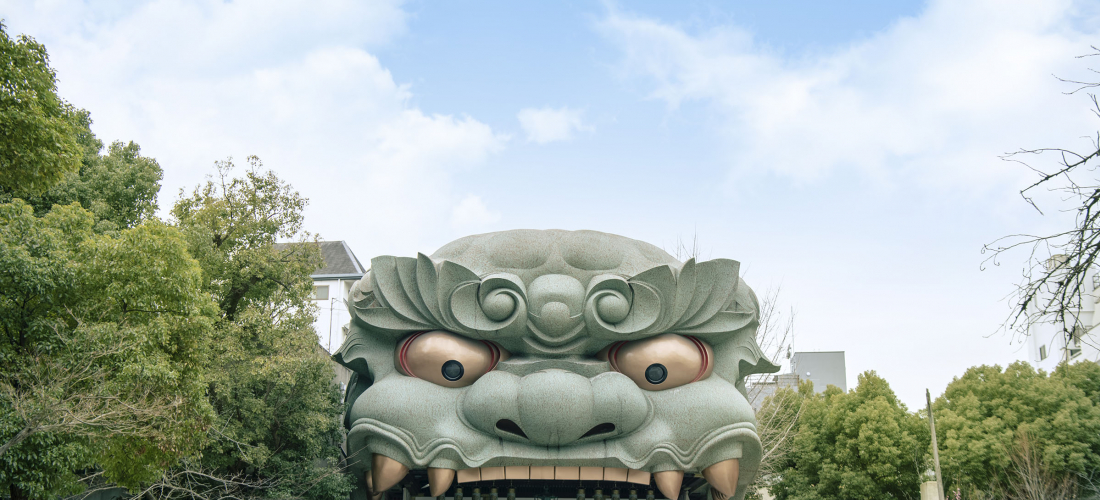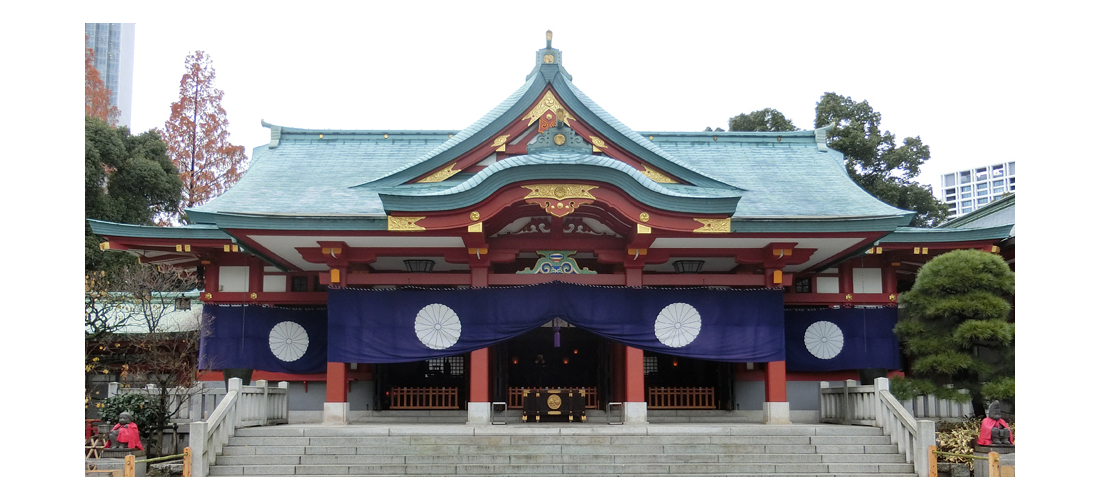
The Fushimi Inari Shrine of Kyoto, with its fame boosted by Hollywood’s Memoirs of a Geisha, is a busy, crowded attraction, making photography a challenge.
Tucked away in southern Kyoto, Fushimi Inari Shrine (called Fushimi Inari Taisha/伏見稲荷大社 in Japanese) became a major sightseeing destination in part thanks to the scene in 2005 Hollywood blockbuster Memoirs of a Geisha. However, with the number of tourists arriving in Kyoto steadily rising for years now (aside from an obvious drop due to COVID-19), there's no doubt that the shrine and its beautiful gates would have risen to popularity in one way or another by now, even without the help of its movie cameo. These days, the red shrine gates, or torii (鳥居) draw massive crowds throughout the year, making it hard to take pictures without including a few happy strangers taking center screen. So here are a few tips on how to take pictures of Fushimi Inari Shrine itself, and not the other visiting travelers.
In the end, catching a great shot of the shrine and the torii has a lot to do with luck. But a little advance planning can seriously increase your chances of arriving at a less crowded and less crazy shrine. Sakura (cherry blossom season) at the beginning of April, mid-summer, and peak koyo (autumn foliage viewing) season around November are all periods when tourists gather in Japan, which makes them less than ideal times for capturing the perfect snapshot. Of course, if you're a traveler taking a nice vacation to Japan, chances are pretty high that you're heading to Kyoto close to those seasons, too. The only time of year that you absolutely will not be able to catch a photo without other people is New Years. From January first to the middle of the month, Fushimi Inari is packed with locals and travelers alike, all there to celebrate "hatsumode" (初詣), the first shrine visit of the year. Photographing the crowds of hatsumode at the shrine can certainly be fascinating, but you're definitely not going to get any serene shots of the gates without people.
If you go on new year's morning, you can expect to wait 45 minutes or so in a neighboring parking lot before even getting onto shrine grounds, at which point you join a heaving mass of people like this.
Even if you end up visiting Japan at a more opportune time of year, the shrine will still get pretty crowded. For a picture of the most popular torii areas with golden afternoon shining through them, you can easily expect to wait half an hour or more for a chance to take pictures without some stranger off to the side, even on relatively empty days. For a less boring and stressful photoshoot, however, you might want to try arriving at Fushimi Inari Shrine either very early in the morning, or late in the evening.
As a Shinto shrine, the grounds basically don't close. Shrine keepers and priests are generally only around throughout normal business hours, so if you're hoping to pick up a charm or souvenir while you're there, then you do need to arrive around 9 to 5. But if your end goal is a good photo, get there around sunrise, or closer to sunset. There are far fewer visitors, and the dramatic lighting can make for some very cool views, anyway!
Image Source: Official Shrine Website
Most photos of Fushimi Inari Shrine focus on the Senbon Torii (千本鳥居), literally "the thousand shrine gates," which are neighboring paths lined with closely packed torii, fairly close to the entrance and main shrine hall of Fushimi Inari. They're the epitome of the shrine's image, gates painted bright vermillion and built so close together that you can barely slip a hand between them. They are always by far the most popular, and most crowded area of the shrine, because they are so very iconic.
But the Senbon Torii aren't the only beautiful part of the shrine. The map above depicts the entirety of the shrine grounds, and while it's easier to understand if you read Japanese, you don't need to read to see that the paths stretch high into the mountain. At the bottom of the map is the entrance to the shrine, and the Senbon Torii (the two rows of torii to the far right) aren't the only torii in the shrine.
The shrine really continues all the way up to the top of the mountain, and while the gates begin to stretch farther and farther apart in certain areas, there are plenty of beautiful spots to explore. Instead of dodging tourists down below, in the higher parts of the mountain you have a chance to concentrate on the contrast of the red gates and the greens and browns of the surrounding forest, plus the grey stone steps climbing the mountainside.
With a little bit of forethought, and a little luck, you'll find your own piece of tranquility at the beautiful Fushimi Inari Shrine, and get some great pictures to remember it by.
Got any other tips for a trip to Fushimi Inari? Taken any amazing snapshots at busy Japanese sightseeing hotspots? The Japankuru team would love to hear! Tell us all about it on twitter, instagram, and facebook!
Details
NAME:Fushimi Inari Shrine (伏見稲荷大社)
ACCESS:Inari Station, Fushimi-Inari Station
Half a lifetime ago I came to Japan for a semester abroad... and I never left. I guess I really like the place! I spent my first few years in Japan living in the middle of nowhere, so I'd love to hear your Tokyo recommendations via Japankuru's social media accounts!
COMMENT
FEATURED MEDIA
VIEW MORE 
A New Tokyo Animal Destination: Relax & Learn About the World’s Animals in Japan
#pr #japankuru #anitouch #anitouchtokyodome #capybara #capybaracafe #animalcafe #tokyotrip #japantrip #카피바라 #애니터치 #아이와가볼만한곳 #도쿄여행 #가족여행 #東京旅遊 #東京親子景點 #日本動物互動體驗 #水豚泡澡 #東京巨蛋城 #เที่ยวญี่ปุ่น2025 #ที่เที่ยวครอบครัว #สวนสัตว์ในร่ม #TokyoDomeCity #anitouchtokyodome

Shohei Ohtani Collab Developed Products & Other Japanese Drugstore Recommendations From Kowa
#pr #japankuru
#kowa #syncronkowa #japanshopping #preworkout #postworkout #tokyoshopping #japantrip #일본쇼핑 #일본이온음료 #오타니 #오타니쇼헤이 #코와 #興和 #日本必買 #日本旅遊 #運動補充能量 #運動飲品 #ช้อปปิ้งญี่ปุ่น #เครื่องดื่มออกกำลังกาย #นักกีฬา #ผลิตภัณฑ์ญี่ปุ่น #อาหารเสริมญี่ปุ่น

도쿄 근교 당일치기 여행 추천! 작은 에도라 불리는 ‘가와고에’
세이부 ‘가와고에 패스(디지털)’ 하나면 편리하게 이동 + 가성비까지 완벽하게! 필름카메라 감성 가득한 레트로 거리 길거리 먹방부터 귀여움 끝판왕 핫플&포토 스폿까지 총집합!
Looking for day trips from Tokyo? Try Kawagoe, AKA Little Edo!
Use the SEIBU KAWAGOE PASS (Digital) for easy, affordable transportation!
Check out the historic streets of Kawagoe for some great street food and plenty of picturesque retro photo ops.
#pr #japankuru #도쿄근교여행 #가와고에 #가와고에패스 #세이부패스 #기모노체험 #가와고에여행 #도쿄여행코스 #도쿄근교당일치기 #세이부가와고에패스
#tokyotrip #kawagoe #tokyodaytrip #seibukawagoepass #kimono #japantrip

Hirakata Park, Osaka: Enjoy the Classic Japanese Theme Park Experience!
#pr #japankuru #hirakatapark #amusementpark #japantrip #osakatrip #familytrip #rollercoaster #retrôvibes #枚方公園 #大阪旅遊 #關西私房景點 #日本親子旅行 #日本遊樂園 #木造雲霄飛車 #히라카타파크 #สวนสนุกฮิราคาตะพาร์ค

🍵Love Matcha? Upgrade Your Matcha Experience With Tsujiri!
・160년 전통 일본 말차 브랜드 츠지리에서 말차 덕후들이 픽한 인기템만 골라봤어요
・抹茶控的天堂!甜點、餅乾、飲品一次滿足,連伴手禮都幫你列好清單了
・ส่องมัทฉะสุดฮิต พร้อมพาเที่ยวร้านดังในอุจิ เกียวโต
#pr #japankuru #matcha #matchalover #uji #kyoto #japantrip #ujimatcha #matchalatte #matchasweets #tsujiri #말차 #말차덕후 #츠지리 #교토여행 #말차라떼 #辻利抹茶 #抹茶控 #日本抹茶 #宇治 #宇治抹茶 #日本伴手禮 #抹茶拿鐵 #抹茶甜點 #มัทฉะ #ของฝากญี่ปุ่น #ชาเขียวญี่ปุ่น #ซึจิริ #เกียวโต

・What Is Nenaito? And How Does This Sleep Care Supplement Work?
・你的睡眠保健品——認識「睡眠茶氨酸錠」
・수면 케어 서플리먼트 ‘네나이토’란?
・ผลิตภัณฑ์เสริมอาหารดูแลการนอน “Nenaito(ネナイト)” คืออะไร?
#pr #japankuru #sleepcare #japanshopping #nenaito #sleepsupplement #asahi #睡眠茶氨酸錠 #睡眠保健 #朝日 #l茶胺酸 #日本藥妝 #日本必買 #일본쇼핑 #수면 #건강하자 #네나이토 #일본영양제 #อาหารเสริมญี่ปุ่น #ช้อปปิ้งญี่ปุ่น #ร้านขายยาญี่ปุ่น #ดูแลตัวเองก่อนนอน #อาซาฮิ

Japanese Drugstore Must-Buys! Essential Items from Hisamitsu® Pharmaceutical
#PR #japankuru #hisamitsu #salonpas #feitas #hisamitsupharmaceutical #japanshopping #tokyoshopping #traveltips #japanhaul #japantrip #japantravel

Whether you grew up with Dragon Ball or you just fell in love with Dragon Ball DAIMA, you'll like the newest JINS collab. Shop this limited-edition Dragon Ball accessory collection to find some of the best Dragon Ball merchandise in Japan!
>> Find out more at Japankuru.com! (link in bio)
#japankuru #dragonball #dragonballdaima #animecollab #japanshopping #jins #japaneseglasses #japantravel #animemerch #pr

This month, Japankuru teamed up with @official_korekoko to invite three influencers (originally from Thailand, China, and Taiwan) on a trip to Yokohama. Check out the article (in Chinese) on Japankuru.com for all of their travel tips and photography hints - and look forward to more cool collaborations coming soon!
【橫濱夜散策 x 教你怎麼拍出網美照 📸✨】
每次來日本玩,是不是都會先找旅日網紅的推薦清單?
這次,我們邀請擁有日本豐富旅遊經驗的🇹🇭泰國、🇨🇳中國、🇹🇼台灣網紅,帶你走進夜晚的橫濱!從玩樂路線到拍照技巧,教你怎麼拍出最美的夜景照。那些熟悉的景點,換個視角說不定會有新發現~快跟他們一起出發吧!
#japankuru #橫濱紅磚倉庫 #汽車道 #中華街 #yokohama #japankuru #橫濱紅磚倉庫 #汽車道 #中華街 #yokohama #yokohamaredbrickwarehouse #yokohamachinatown

If you’re a fan of Vivienne Westwood's Japanese designs, and you’re looking forward to shopping in Harajuku this summer, we’ve got important news for you. Vivienne Westwood RED LABEL Laforet Harajuku is now closed for renovations - but the grand reopening is scheduled for July!
>> Find out more at Japankuru.com! (link in bio)
#japankuru #viviennewestwood #harajuku #omotesando #viviennewestwoodredlabel #viviennewestwoodjapan #비비안웨스트우드 #오모테산도 #하라주쿠 #日本購物 #薇薇安魏斯伍德 #日本時尚 #原宿 #表參道 #japantrip #japanshopping #pr

Ready to see TeamLab in Kyoto!? At TeamLab Biovortex Kyoto, the collective is taking their acclaimed immersive art and bringing it to Japan's ancient capital. We can't wait to see it for ourselves this autumn!
>> Find out more at Japankuru.com! (link in bio)
#japankuru #teamlab #teamlabbiovortex #kyoto #kyototrip #japantravel #artnews
Photos courtesy of teamLab, Exhibition view of teamLab Biovortex Kyoto, 2025, Kyoto ® teamLab, courtesy Pace Gallery

Japanese Makeup Shopping • A Trip to Kamakura & Enoshima With Canmake’s Cool-Toned Summer Makeup
#pr #canmake #enoshima #enoden #에노시마 #캔메이크 #japanesemakeup #japanesecosmetics

⚔️The Robot Restaurant is gone, but the Samurai Restaurant is here to take its place. Check it out, and don't forget your coupon!
🍣신주쿠의 명소 로봇 레스토랑이 사무라이 레스토랑으로 부활! 절찬 쿠폰 발급중
💃18歲以上才能入場的歌舞秀,和你想的不一樣!拿好優惠券去看看~
#tokyo #shinjuku #samurairestaurant #robotrestaurant #tokyotrip #도쿄여행 #신주쿠 #사무라이레스토랑 #이색체험 #할인이벤트 #歌舞伎町 #東京景點 #武士餐廳 #日本表演 #日本文化體驗 #japankuru #japantrip #japantravel #japanlovers #japan_of_insta

Japanese appliance & electronics shopping with our KOJIMA x BicCamera coupon!
用JAPANKURU的KOJIMA x BicCamera優惠券買這些正好❤️
코지마 x 빅 카메라 쿠폰으로 일본 가전 제품 쇼핑하기
#pr #japankuru #japanshopping #kojima #biccamera #japaneseskincare #yaman #dji #osmopocket3 #skincaredevice #日本購物 #美容儀 #相機 #雅萌 #日本家電 #일본여행 #면세 #여행꿀팁 #일본쇼핑리스트 #쿠폰 #일본쇼핑 #일본브랜드 #할인 #코지마 #빅카메라 #japankurucoupon
MAP OF JAPAN
SEARCH BY REGION

LATEST
VIEW MOREEVENT CALENDAR
VIEW MORE